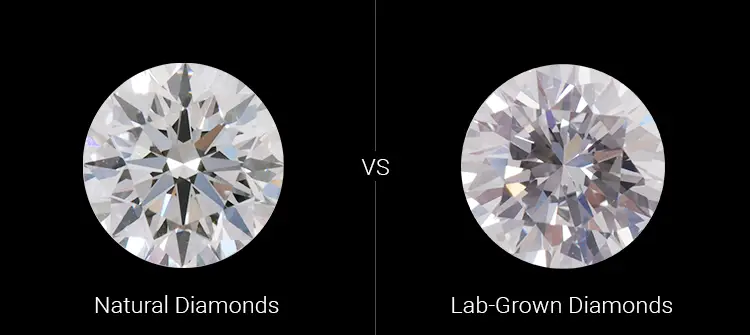Introduction to Lab-Grown Diamonds
Lab-grown diamonds, also known as synthetic diamonds, are created through technological processes in controlled laboratory environments rather than being mined from the Earth’s crust. These diamonds possess identical physical, chemical, and optical properties to natural diamonds, making them a viable and sustainable choice for various industries.
History of Lab-Grown Diamonds
The concept of lab-grown diamonds dates back to early experiments in the mid-20th century. Over time, advancements in technology, particularly the HPHT and CVD methods, have refined diamond synthesis techniques lab grown diamonds hpht, paving the way for commercial production.
Types of Lab-Grown Diamonds
Lab-grown diamonds are primarily produced using two main methods: HPHT and Chemical Vapor Deposition (CVD). This article focuses on the HPHT method, which replicates the natural diamond formation process under controlled conditions of high pressure and high temperature.
Understanding HPHT Diamonds
HPHT diamonds are created subjecting a diamond seed or carbon source to intense pressure (5-6 GPa) and high temperature (1200-1600°C) in a specialized press. This process mimics the natural conditions in the Earth’s mantle where diamonds form over millions of years.
Quality and Characteristics of HPHT Diamonds
HPHT diamonds exhibit high clarity and can achieve various colors, ranging from colorless to fancy colors like yellow, pink, and blue. These diamonds undergo rigorous grading processes to ensure they meet industry standards for clarity, cut, color, and carat weight.
Clarity and Color Grading
HPHT diamonds are graded using the same standards as natural diamonds gemological laboratories. They are evaluated for internal flaws (inclusions) and external blemishes to determine their clarity grade, which affects their value and market acceptance.
Comparison with Natural Diamonds
In terms of optical and physical properties, HPHT diamonds are virtually indistinguishable from natural diamonds. They possess the same hardness (10 on the Mohs scale), brilliance, and fire that have made diamonds coveted throughout history.
Industrial Uses
Beyond jewelry, HPHT diamonds have industrial applications in cutting tools, electronics, and medical equipment. Their exceptional hardness and thermal conductivity make them invaluable in high-precision manufacturing processes.
Perception of HPHT Diamonds vs. Natural Diamonds
Some consumers may prefer natural diamonds due to their rarity and perceived value. Educating consumers about the similarities and benefits of HPHT diamonds can influence their purchasing decisions.
Ethical and Sustainability Factors
HPHT diamonds are often viewed as a sustainable choice compared to mined diamonds, which may be associated with environmental degradation and social issues. Transparency in diamond sourcing and certification helps address consumer concerns.
Market Trends and Growth
The market for lab-grown diamonds, including HPHT diamonds, has experienced rapid growth in recent years. This trend is driven increasing consumer awareness of sustainable alternatives and advancements in diamond synthesis technology.
Rising Demand in the Diamond Market
Consumer demand for ethically sourced and sustainable products has contributed to the popularity of lab-grown diamonds. Jewelry retailers and manufacturers are expanding their offerings to include HPHT diamonds to cater to this growing market segment.
Future Projections
Looking ahead, the market for HPHT diamonds is expected to continue expanding as technological advancements further improve production efficiency and diamond quality. Continued research and development will enhance the appeal of lab-grown diamonds across global markets.
Market Acceptance Challenges
Educating consumers and gaining acceptance for lab-grown diamonds, particularly in traditional jewelry markets, remains a challenge despite growing awareness and acceptance among younger demographics.
Comparison with CVD Diamonds
CVD (Chemical Vapor Deposition) is another method used to produce lab-grown diamonds, differing from HPHT in the process of carbon atom deposition. CVD diamonds have distinct characteristics and are preferred in certain applications based on their quality and production advantages.
Differences in Manufacturing Process
Unlike HPHT diamonds, which grow under extreme pressure and temperature, CVD diamonds form from a carbon-rich gas in a vacuum chamber. This process allows for greater control over diamond purity and growth rate.
Quality and Market Preferences
Both HPHT and CVD diamonds offer high-quality alternatives to natural diamonds, each with unique advantages depending on the desired application and market preferences.
Lab created diamonds, also known as synthetic or cultured diamonds, are diamonds that are produced in a laboratory setting rather than mined from the Earth. These diamonds possess the same physical, chemical, and optical properties as natural diamonds, making them indistinguishable to the naked eye.
Standards for HPHT Diamond Certification
Diamond certification bodies, such as the Gemological Institute of America (GIA), provide grading reports that certify the authenticity and quality of HPHT diamonds. These reports detail the diamond’s characteristics and origin, aiding consumers in making informed purchasing decisions.
Consumer Awareness Initiatives
Industry stakeholders, including diamond manufacturers and retailers, actively promote awareness campaigns to educate consumers about the benefits and value of lab-grown diamonds. These initiatives aim to foster trust and transparency in the marketplace.
Educational Campaigns Industry Stakeholders
Collaborative efforts between diamond producers, retailers, and educational institutions support ongoing research and public engagement initiatives. These campaigns highlight the environmental benefits and technological advancements driving the evolution of lab-grown diamonds.
Conclusion
In conclusion, lab-grown diamonds produced using the HPHT method represent a significant advancement in diamond technology and sustainability. These diamonds offer consumers a choice that aligns with ethical considerations while maintaining the allure and brilliance of natural diamonds. As technological innovations continue to refine diamond synthesis processes, the future of lab-grown diamonds, including HPHT diamonds, appears promising with expanding applications and consumer acceptance worldwide. Embracing these advancements ensures a sustainable and responsible approach to luxury and industrial diamond markets.

